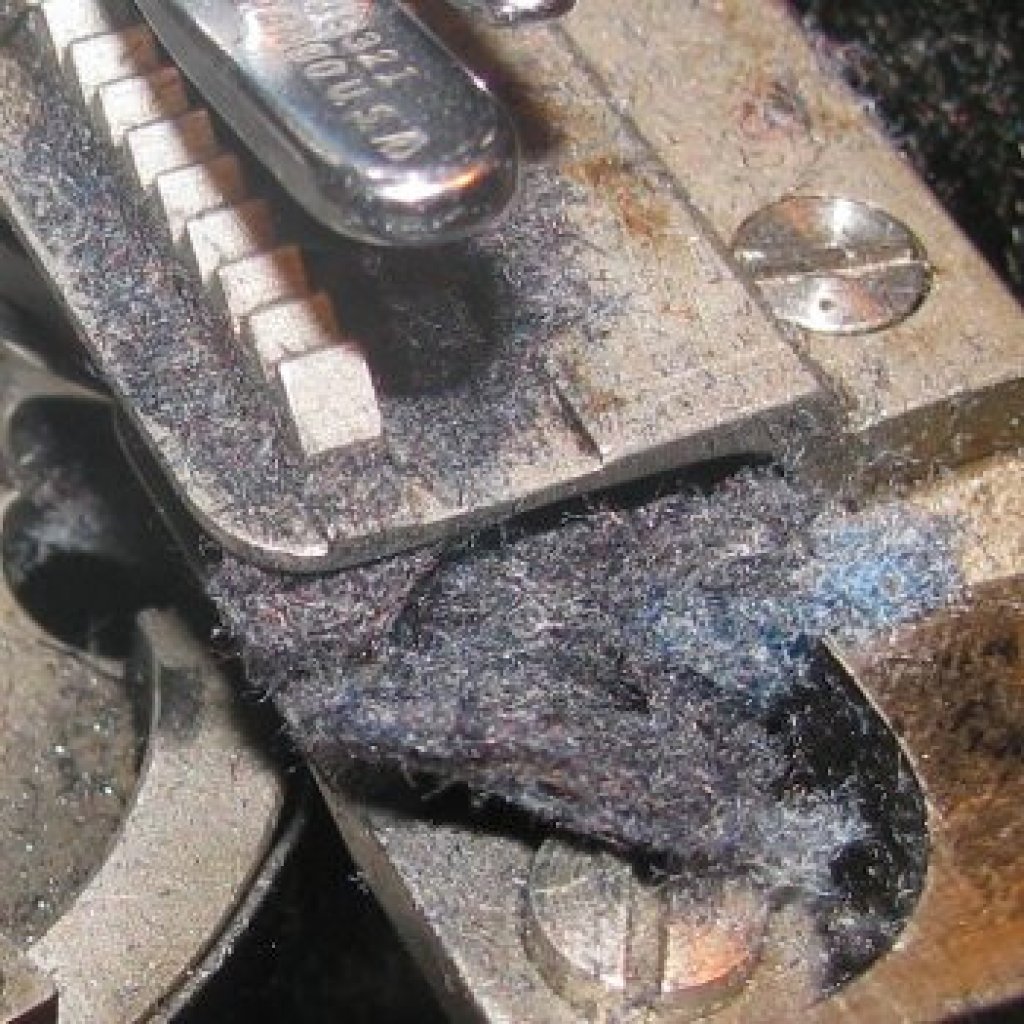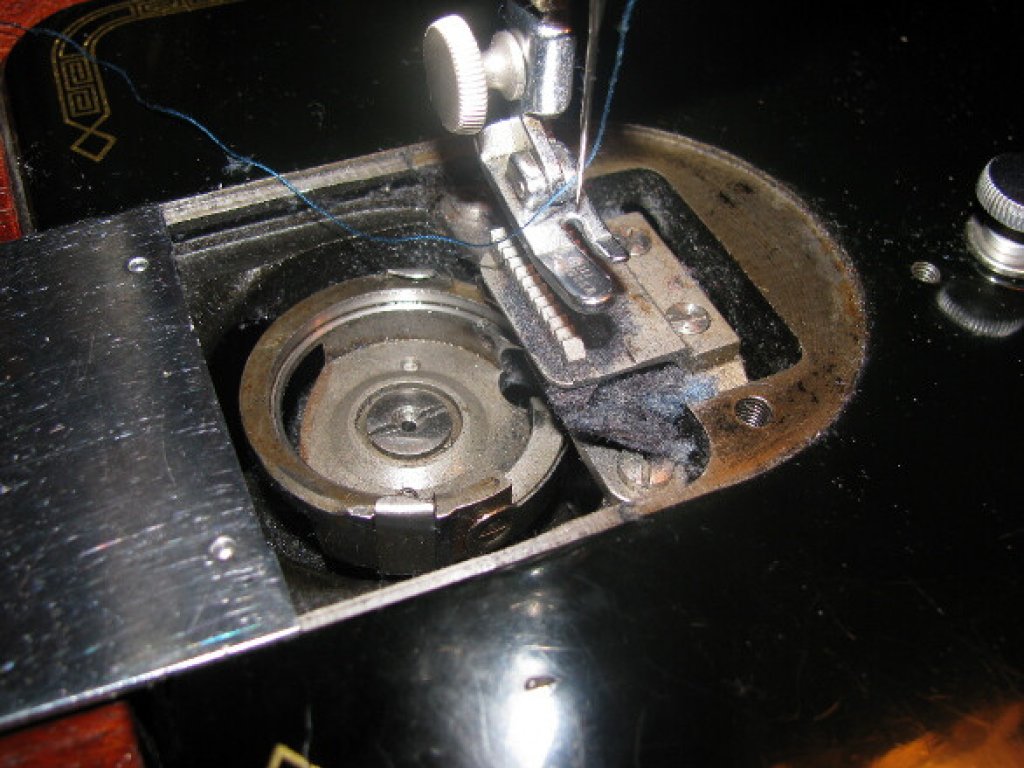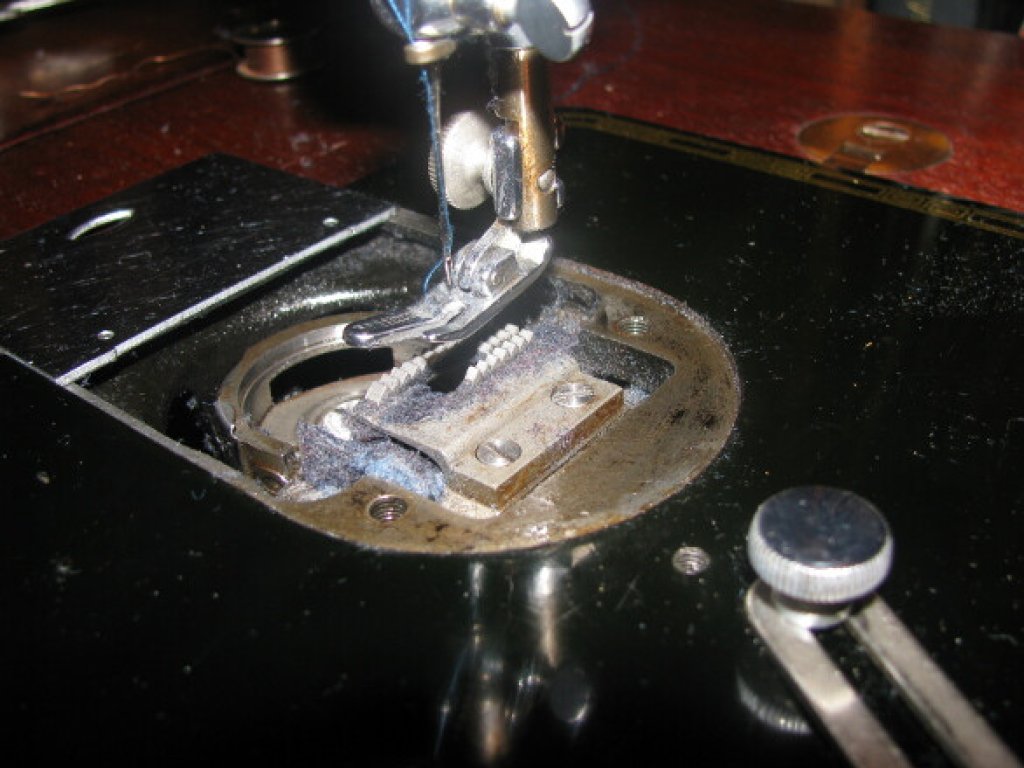Maintenance on a vintage Singer 201 sewing machine is very important to keeping it running at its best. I try to regularly clean and oil my sewing machine, a vintage Singer 201-2 built in 1939. It can be counted on to run beautifully most of the time, with perfectly straight stitches, and almost noiselessly, compared to other machines I’ve used.
However, I ran into an issue the other day. The bobbin thread kept breaking off and getting clogged in the bobbin casing. The first thing I did was take out the casing, and inspect it for any lint or dust. Nothing could be seen. The next thing I tried was a new needle, and again, the problem persisted. So I decided to give the machine a thorough cleaning and oiling, even though I had just done so a couple days earlier. Did that work? Of course not.
Then I thought, maybe the area under the throat plate was clogged. I had not checked that area since I bought the machine, because one of the screws was stuck. So I decided I’d get that screw off, and using a bigger screw driver helped. Here’s what I found inside:


